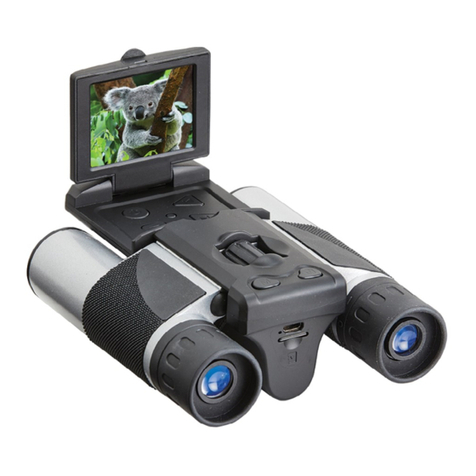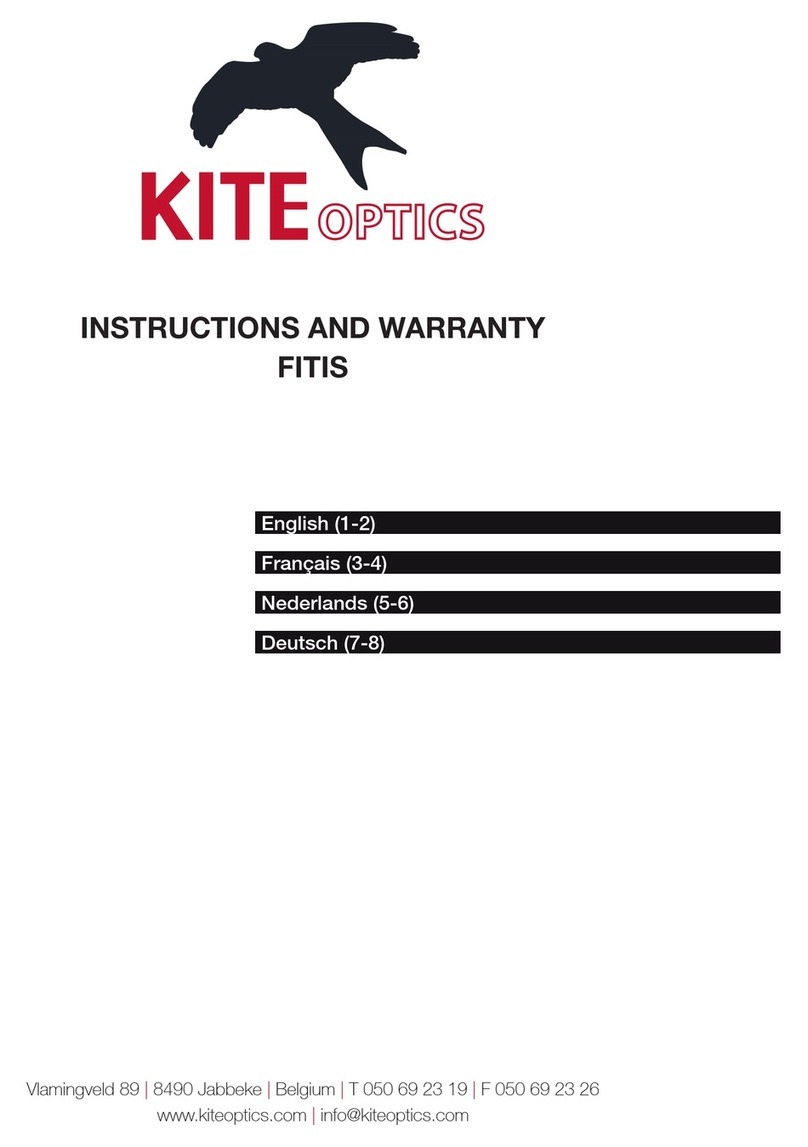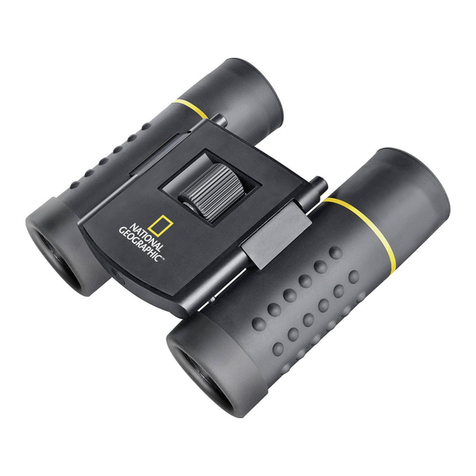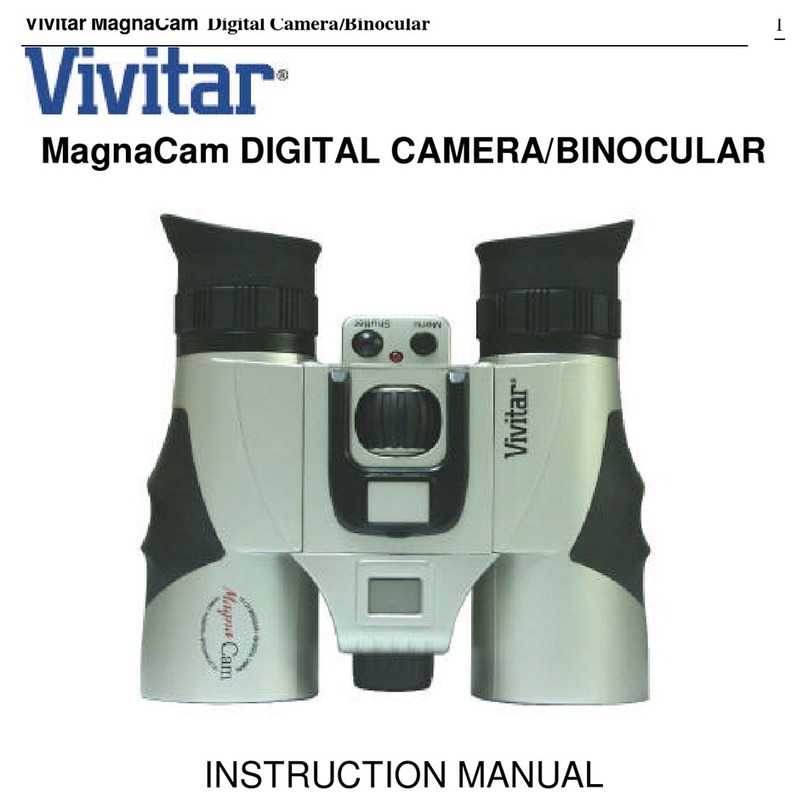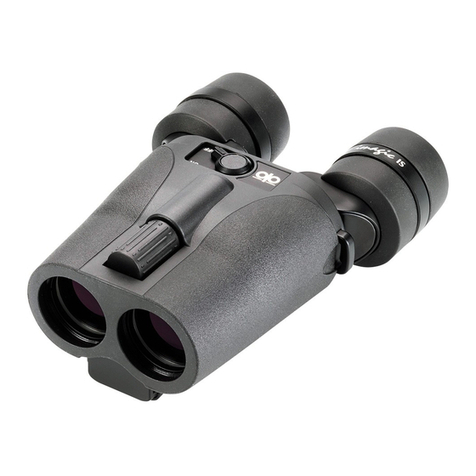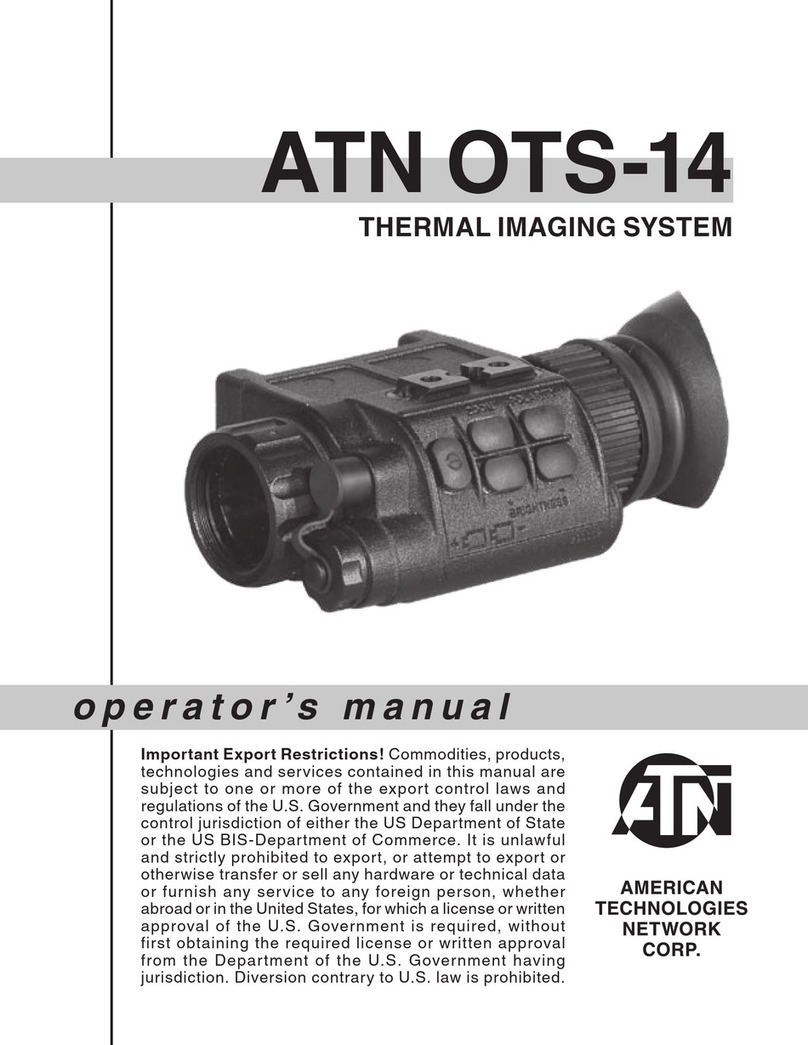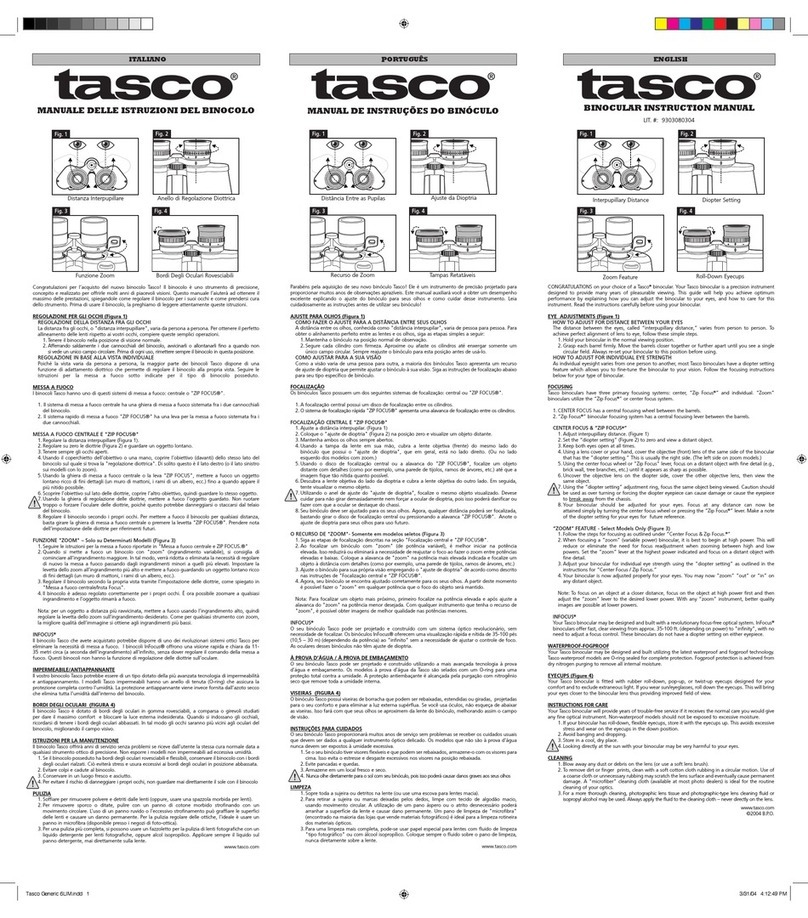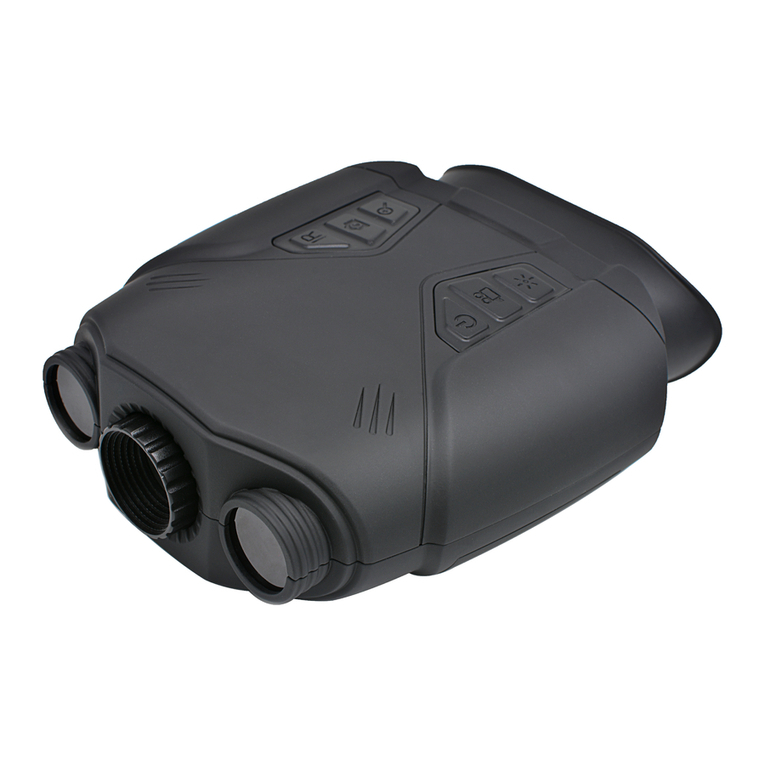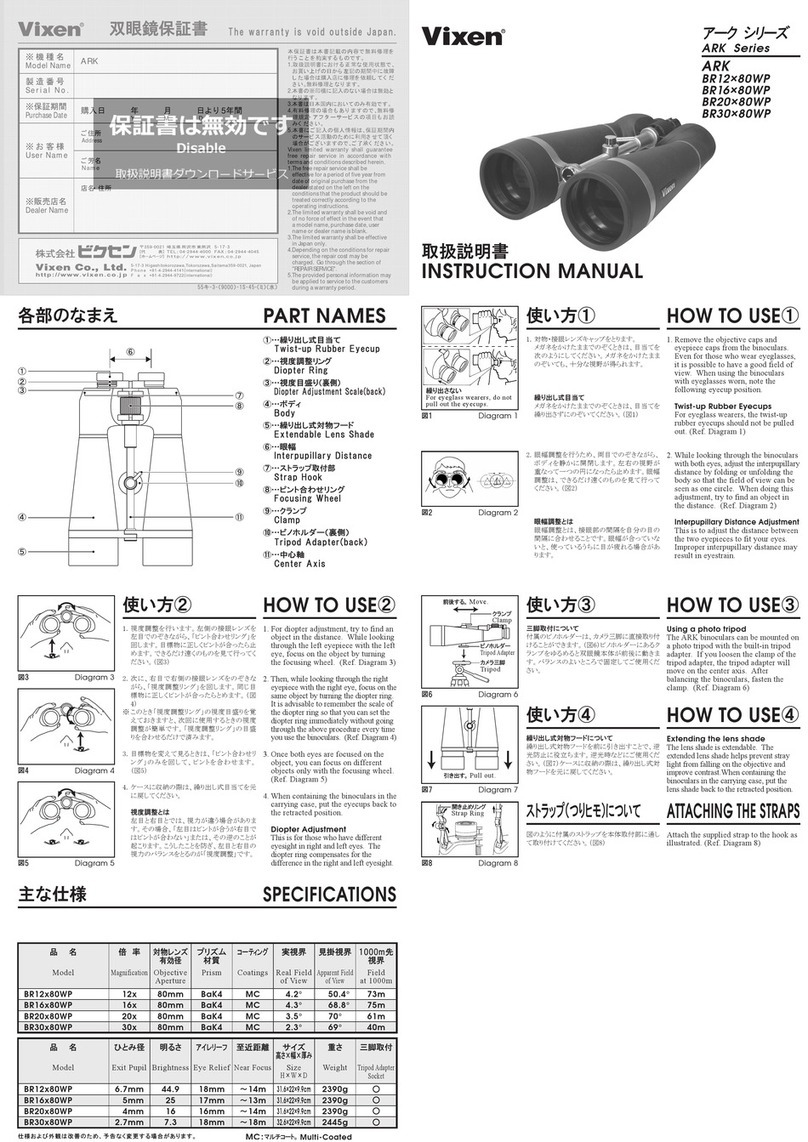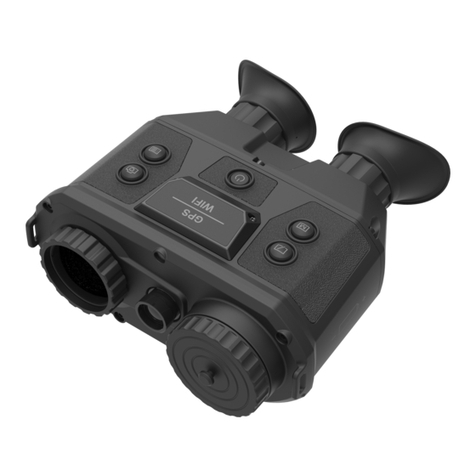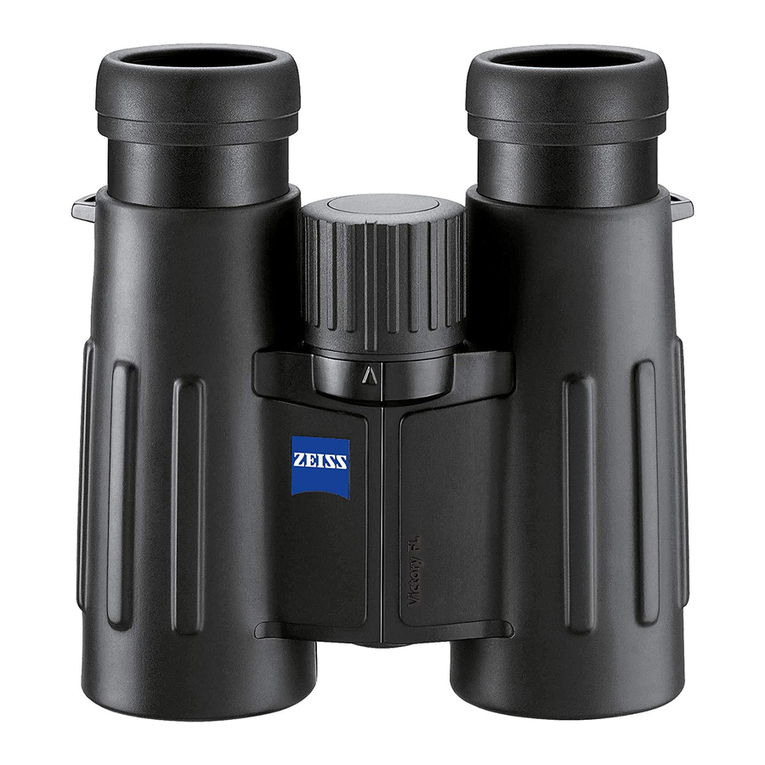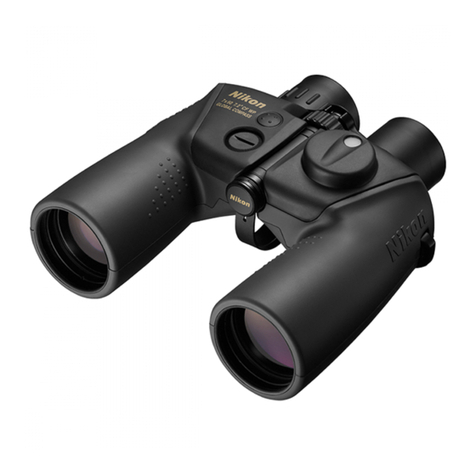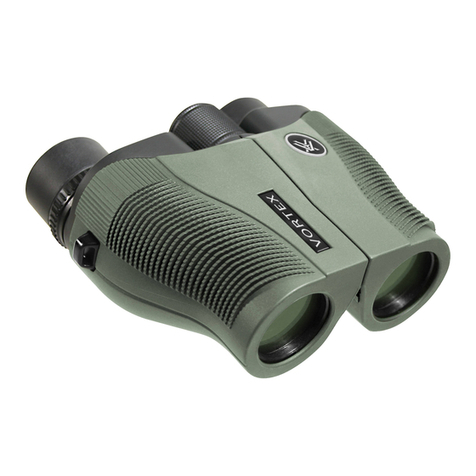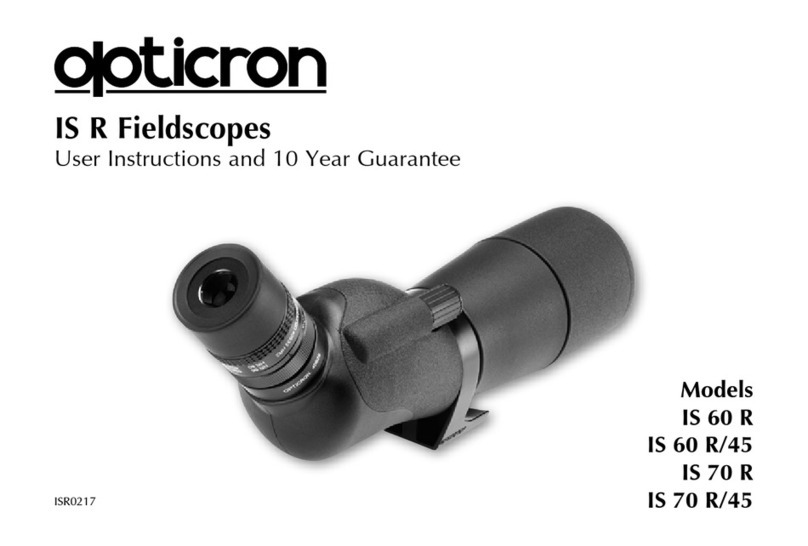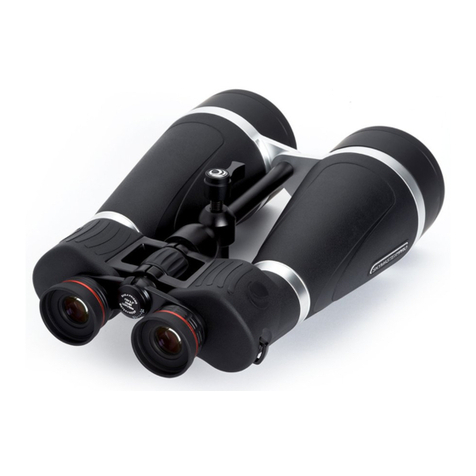Thermal-Eye X150 User manual


Page 2
X150 User Manual
This equipment has been tested and found to comply with the
limits for a Class B digital device, pursuant to Part 15 of the
FCC rules. These limits are designed to provide reasonable
protection against harmful interference in a residential
installation. This equipment generates, uses, and can radiate
radio frequency energy and, if not installed and used in
accordance with the instructions, may cause harmful
interference to radio communications. However, there is no
guarantee that interference will not occur in a particular
installation. If this equipment does cause harmful interference
to radio or television reception, which can be determined by
turning the equipment on and off, the user is encouraged to try
to correct the interference by one or more of the following
measures:
−
Reorient or relocate the receiving antenna.
−
Increase separation between equipment and receiver.
−
Connect the equipment into an outlet on a circuit different
from that to which the receiver is connected.
−
Consult the dealer or an experienced radio/TV technician
for help.
−
Changes or modifications not expressly approved by L-3
Communications Infrared Products could void the user’s
authority to operate this equipment.
−
For continued FCC Compliance, use only accessories
approved by L-3 Communications Infrared Products

Page 3
X150 User Manual
User Manual P/N 1000548-1 Rev B
©2007 L-3 Communications Infrared Products.
All Rights Reserved
Registered Trademarks of
L-3 Communications Infrared Products
Patents
This product is covered by one or more of the following patents: U.S. Patent Nos.: 5,288,649;
5,367,167; 6,267,501; 6,586,831; 6,521,477; 6,690,014; 6,479,320 and under license to
5,196,703. Euro.Pat.Appln. 1159591.
Additional Patents Pending.
EXPORT CONTROL NOTICE – This technical data and software is considered as
Technology Software Publicly Available (TSPA) No License Required (NLR) as defined
in Export Administration Regulations (EAR) Part 734.7-11.
CE Manufacturers Declaration of Conformity
Product Identification: Thermal Infrared Camera
Model/Type: X200 Camera / (X2)
Version: 7070410 (7070415)
Manufacturer: L-3 Communications Infrared Products
13532 North Central Expressway, MS 37
Dallas, TX. 75243
USA (800-990-3275)
Tested by: Nemko Dallas, Inc.
802 North Kealy Road
Lewisville, TX. 75057
EU Representative
BFi OPTiLAS INTERNATIONAL SA
Z. I. La Petite Montagne Sud
4 allée du Cantal – 91018, EVRY CEDEX. FRANCE (33 - (0) 1 60 79 59 55)
A sample of this product has been tested:
To demonstrate compliance with: EN61000-6-1 & EN61000-6-3
Using the following test standards: EN61000-4-2, EN61000-4-3,
EN61000-4-4, EN61000-4-5, EN61000-4-6, EN61000-4-11
Means of conformity:
The product is in conformance with the above standards according to 89/336/EEC

Page 4
X150 User Manual
Table of Contents
1.
Introduction...............................................................6
Welcome to Infrared ...................................................6
Handling & Precautions ........................................9
Contacting L-3 Communications Infrared Products..10
2.
Operation.................................................................11
X150 Features...........................................................11
Holding the Camera ..................................................13
Loading the Batteries ................................................15
Opening the Battery Compartment Door ..........15
Installing 2 AA Batteries...................................16
Closing the Battery Compartment Door............17
Acceptable Battery Types .................................17
Replacing Batteries ...........................................18
Turning on the Power................................................19
Camera Warm-Up.............................................19
Automatic Camera Shutter................................19
Automatic Contrast ...........................................20
Determining Remaining Battery Power ............21
Adjusting the Display Brightness..............................22
Focusing for Close-up Operation..............................23
Cleaning....................................................................24
3.
Accessories...............................................................25
Accessory Video and Power Cables..........................25
Operating with Video and Power Cables ..................26

Page 5
X150 User Manual
AC/DC Power Adapter .....................................26
Power Cable......................................................27
Video Cable ......................................................27
4.
Specifications...........................................................28
5.
Frequently Asked Questions ..................................31
6.
Troubleshooting Guide...........................................32
7.
Warranty .................................................................33
Warranty Registration Card ......................................34
How To Return Products For Warranty Repair.........35

Page 6
X150 User Manual
1. Introduction
Thank you for choosing the X150 Thermal Imaging
Camera. With its small size, rugged design, and
simplicity, you can now focus on the job at hand, rather
than the camera in your hand.
Before using this camera, please read these instructions
carefully, and retain them for future reference.
Welcome to Infrared
L-3 Infrared Products (L-3 IP) has long been a leader in
the production and development of military products
based on infrared thermal imaging. In an effort to make
this technology more widely available, L-3 IP’s engineers
and scientists developed many unique ways of translating
infrared energy into visible imagery. Now L-3 IP is
providing affordable thermal imaging solutions for fire,
law enforcement, marine, security, and other commercial
uses.

Page 7
X150 User Manual
Infrared energy, often referred to as infrared or IR, is
electromagnetic radiation that travels in a straight line
through space, similar to visible light. Although infrared
shares some of the properties of visible light, its different
wavelength has several unique characteristics. For
instance, materials that are opaque to visible light may be
transparent to infrared, and vice–versa.
Also, unlike visible light, which is given off by ordinary
objects only at very high temperatures (e.g. light bulbs),
long wavelength infrared (7–14 µm) is emitted by all
objects at ordinary temperatures. This means infrared is all
around us all the time, even in the dark. Different objects
give off varying amounts of infrared, depending on the
temperature of the object.
The X150 was designed to sense differing amounts of long
wavelength infrared coming from the various areas of a
scene and to convert them to corresponding intensities of
visible light on a display. This allows true see–in–the–dark
capability, as well as the ability to discern additional
information—differences in temperature—by observing
the thermal properties of objects in any light condition.

Page 8
X150 User Manual
Infrared energy is emitted proportionally to the temperature
of an object . The warmer the object, the more energy it
emits. The infrared energy from the objects is focused by
the optics , onto an infrared detector . The information
from the infrared detector is passed to electronics for
image processing. The signal processing circuitry translates
the infrared detector data into an image that can be
viewed on the built-in video monitor.
A
BC
D
E
HOT
COLD
WARM
A
B
C
D
E

Page 9
X150 User Manual
Handling & Precautions
All batteries can cause property damage or bodily
injury if a conductive material such as jewelry or
keys touch exposed terminals. Exercise care when
placing batteries inside a pocket, case, or other
container with metal objects.
Do not replace batteries in a potentially explosive
atmosphere, such as a gas station or any place where
you might normally be advised to turn off your
vehicle engine. Contact sparking may occur and
cause an explosion.
Do not remove power – removing batteries or
disconnecting optional external power supply –
without first turning the camera off using the on/off
switch.
Do not permanently attach this camera to dynamic–
mount applications, such as on vehicles or heavy
machinery, in which transmitted vibration is
continuously sustained.
Never point this camera directly into the sun, welding
arcs, or any other extreme intensity objects that you
would not view with your eyes. Doing so will damage
the camera.

Page 10
X150 User Manual
Contacting L-3 Communications Infrared Products
The Customer Service Department is available to assist
with questions about this product. When you contact us,
please have the following information available:
⇒Camera part number
⇒Camera serial number
Part and serial numbers are located under the rear
door/plug.
L-3 Communications Infrared Products Customer Service
Department: 800-990-3275 (US) or 972-528-1528 (Int’l)

Page 11
X150 User Manual
2. Operation
X150 Features
Rubber
armored
construction
Submersible to
3 meters
Floats in
water
Standard AA
batteries
Viewing range – 15ft to infinity.
Rotate lens for close range
(4ft -15ft).

Page 12
X150 User Manual
Single
button
operation
Variable
brightness
display
Long eye-relief – supports use
w/glasses and face shields
Connect external power or external
video (requires optional cables)
Model & serial number behind the external connections plug
Tripod mount (1/4-20 thread)
Battery icon
Indicates
charge

Page 13
X150 User Manual
Holding the Camera
The camera can be mounted to a tripod using the 1/4-20
insert.
Tripod Mount
The camera can be held either right-, or left-handed.

Page 14
X150 User Manual
To avoid dropping the camera, attach the strap provided.
Both a neck strap, and a wrist strap are provided for your
convenience. Attach the strap to the camera by looping it
through the attachment point as shown below.
The camera can be held in any orientation and the image
in the LCD display will remain upright.

Page 15
X150 User Manual
Loading the Batteries
Opening the Battery Compartment Door
Unscrew battery compartment door knob
counterclockwise.
Open the door to install batteries.

Page 16
X150 User Manual
Installing 2 AA Batteries
+
++
+& –
––
–symbols inside the battery compartment indicate
the direction to install batteries.
Notice the raised tab next to the
+
++
+
sign, and the
sunken tab next to the
-
--
-
sign. Use these to install the
batteries in complete darkness by feel without having
to see the battery symbols.
.
Sunken Tab - Insert battery
with positive end down.
Raised Tab - Insert battery with
positive end up.

Page 17
X150 User Manual
Closing the Battery Compartment Door
Close the battery compartment door by screwing the knob
clockwise.
Acceptable Battery Types
The camera will operate from the following types as long
as they are AA size:
⇒Alkaline
⇒Nickel-Metal-Hydride (NiMh) rechargeable
⇒Lithium
The camera does not have an internal battery charger. If
using rechargeable batteries, they must be charged with a
separate external charger.

Page 18
X150 User Manual
Replacing Batteries
When replacing batteries, always replace BOTH
batteries. Mixing a fresh battery with a partially
discharged battery is potentially hazardous.
Never mix battery types (alkaline, rechargeable,
lithium, etc). Both batteries must be of the same type.
Remove batteries if the camera is to be stored for
extended periods (2 weeks or more).
Always follow the battery manufacturers’ directions
for proper disposal of batteries.
Before removing/replacing batteries, always ensure
the camera is first turned off. Failure to first turn the
camera off may result in a flickering or ghost-image
display the next time the camera is turned on. The
display will correct itself after a 5-10 minute waiting
period. This waiting period can be with the camera
either on (operating) or off (stored).

Page 19
X150 User Manual
Turning on the Power
Rotate the power knob clockwise to turn on the camera.
Camera Warm-Up
The camera requires approximately three seconds of
warm-up time during which a logo appears on the camera
display. After three seconds, the logo is replaced by the
thermal image.
Automatic Camera Shutter
The X150 uses an automatic shutter to optimize the
amount of IR energy reaching the detector. While the
shutter is adjusting (at 30 to 90 second intervals), the
display freezes for approximately ½ second and a faint
click may be heard inside the camera.

Page 20
X150 User Manual
Automatic Contrast
The X150 constantly adjusts video contrast based upon the
informational content in the scene.
When viewing people, automobiles, boats, and other warm
objects at close range, the video gain is automatically
decreased resulting in more detail on facial features and
flat surfaces.
When viewing a scene with low informational content,
such as a park, field, or roadway, the video gain is
automatically increased to provide more detail in the
background of the scene for objects such as trees, bushes
and roadway edges.
Table of contents

